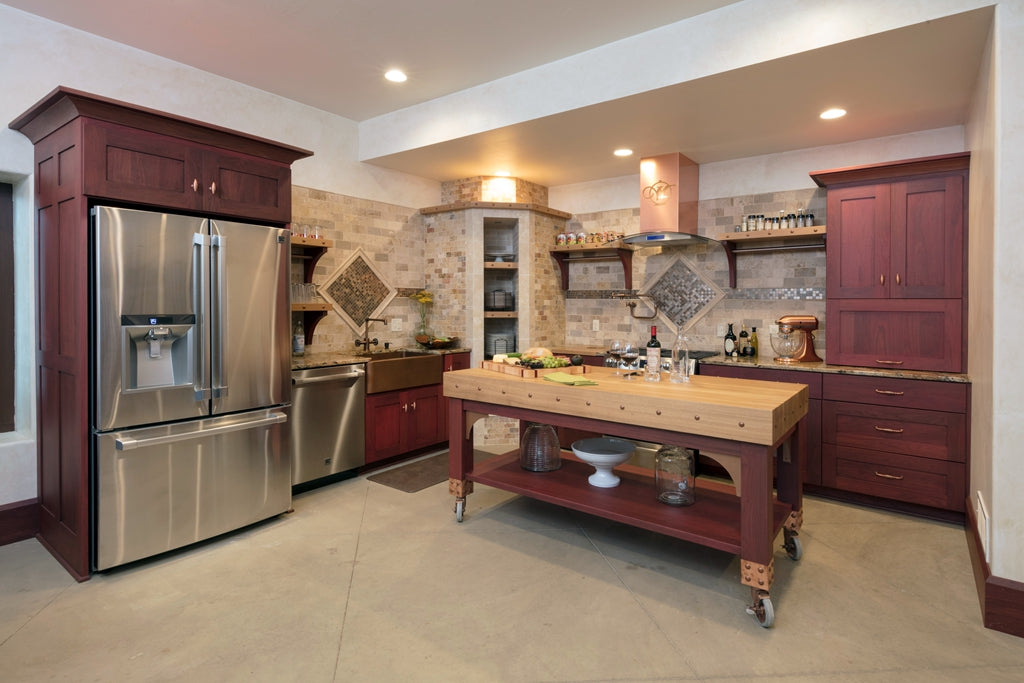Troubleshooting Common Kitchen Faucet Problems
It’s no secret that kitchen faucets can be temperamental. Whether it’s a leak or sudden lack of water pressure, common kitchen faucet problems can be a headache. But fear not! With a few simple steps, you can easily troubleshoot and fix the most common kitchen faucet issues.
Leaks
A leaking kitchen faucet can be caused by a variety of issues, but the fix is usually easy depending on the cause:
- Check the valve seat for a worn out or cracked O-ring. This can lead to a weak seal and allow water to escape.
- Check the valve seats to make sure they are properly aligned. If they are misaligned, it can lead to leaks.
- If the faucet is leaking from the handle, it can mean that the packing nut needs to be tightened.
- If the faucet is leaking from the spout, it can mean that the O-ring or valves contain mineral deposits and need to be cleaned.
Low Water Pressure
If you’re experiencing low water pressure, there could be a few causes, but luckily most of them can be fixed with a few simple solutions:
- The aerator may need to be cleaned out. This can happen if it has become clogged by mineral deposits.
- The shut-off valves may need to be opened a bit more to allow more water through.
- The valves may be worn out or corroded and need to be replaced.
- The inlet screens may need to be cleaned or replaced.
No Hot Water
If you’re not getting any hot water out of your kitchen faucet, it could be due to a few things:
- Make sure the hot water is turned on at the source. Check if the hot water shut-off valve is open.
- Check for a broken or disconnected hot water line. This can happen if the line has become damaged or disconnected from the valve.
- Make sure the water heater is turned on and has sufficient water pressure.
Fixing common kitchen faucet issues doesn’t have to be a hassle. With a few simple steps, you can troubleshoot and repair these issues in no time. When it comes to plumbing problems, kitchen faucets are often the first to deal with problems. An annoying dripping faucet can sound like nails on a chalkboard, while a faucet that doesn’t turn on can put a serious damper on routine kitchen tasks. Regardless of the issue, the good news is that there are likely a few simple steps you can take to help troubleshoot common kitchen faucet problems.
The first thing to do when encountering any issue with a kitchen faucet is to check the supply lines. Make sure these lines are completely turned on, and that the hoses are not leaking or kinked. If the problem persists, check the faucet itself. Make sure the aerator and cartridge are clear and unobstructed. If there’s a buildup of sediment, remove any debris and check for any cracks or breaks in the hardware. Additionally, make sure any valves in the main supply line haven’t been adjusted or closed.
If the above issues don’t result in a properly working faucet, the most likely cause is a faulty O-ring. O-rings are the small rubber pieces that help create a watertight seal. If the O-ring or the seal is cracked, replace it with a new, properly-fitting part.
Finally, if none of the above steps result in a properly functioning faucet, it’s time to call in a certified plumber. A professional can more accurately and efficiently diagnose where the issue lies and is best-qualified to make repairs. With a little knowledge and care, however, most kitchen faucet issues can be solved in no time.
